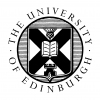© Pint of Science, 2025. All rights reserved.
It seems that every other day, headlines strangely reminiscent of Sci-Fi titles are hitting our newspapers – especially when it comes to synthetic biology and building body parts. But how exactly can we build human tissue and organs from cells? Is this a phenomenon we’ll see in our lifetimes? Please note this event will be held in the basement function room and so has limited accessibility for those with impaired mobility. Pint of Science Edinburgh is supported by an Innovation Initiative Grant from the Edinburgh Fund at the University of Edinburgh.
Making magic micro-medicines
Will Shu is an Associate Professor in Biomedical Microengineering at Heriot-Watt University, Edinburgh. His main research interests cover a range of biomedical engineering topics including 3D bioprinting, lab-on-a-chip, biosensors and their applications for regenerative medicine. His team is working on 3D printing of stem cells and is trying to develop the technology for creating human tissues for testing pharmaceutical drugs instead of using live animals. The technology may also pave the way for 3D printed organs for medical transplantation in the future.
Growing kidneys from scratch
Jamie Davies is Professor of Experimental Anatomy at the University of Edinburgh. His lab focuses on self-organization in biological systems. Some work addresses how natural embryos bootstrap themselves from simplicity to complexity, and do so accurately in the face of much random noise. Other efforts build on that knowledge to encourage stem cells to organize themselves into mini-organs. Recent projects use synthetic biology to reprogram naive cells to make designer forms and patterns. When not doing science, Jamie corrupts university students by teaching them how to Charleston and Jitterbug!
Map data © OpenStreetMap contributors.


